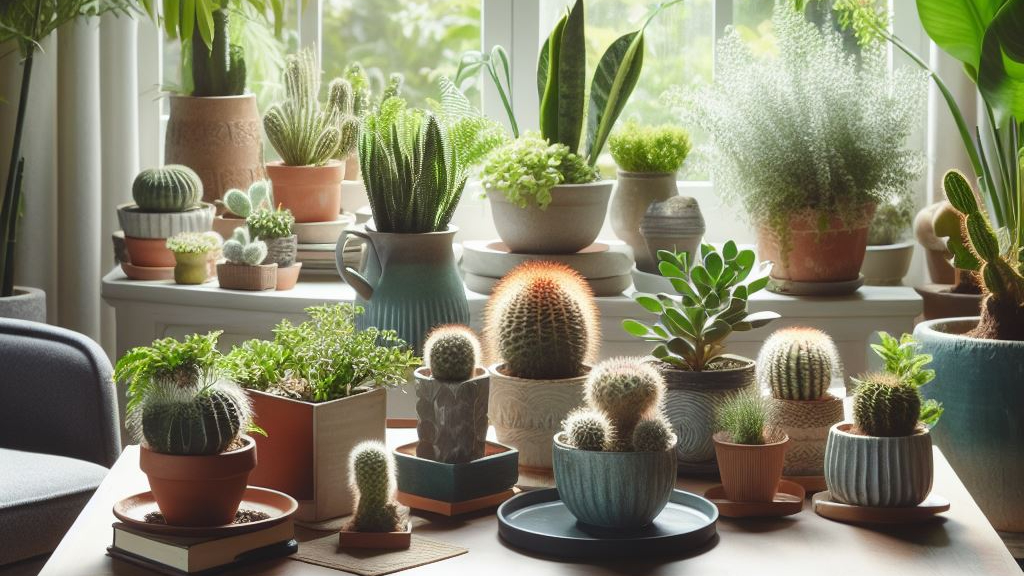Last updated on April 19th, 2024 at 08:33 am
Houseplants bring nature into our homes, making them look nice and even helping us feel better. But, taking care of them can sometimes be tricky, even for people who are good at it. In this article, we’ll talk about common problems with houseplants and give you simple solutions to keep your indoor garden happy.
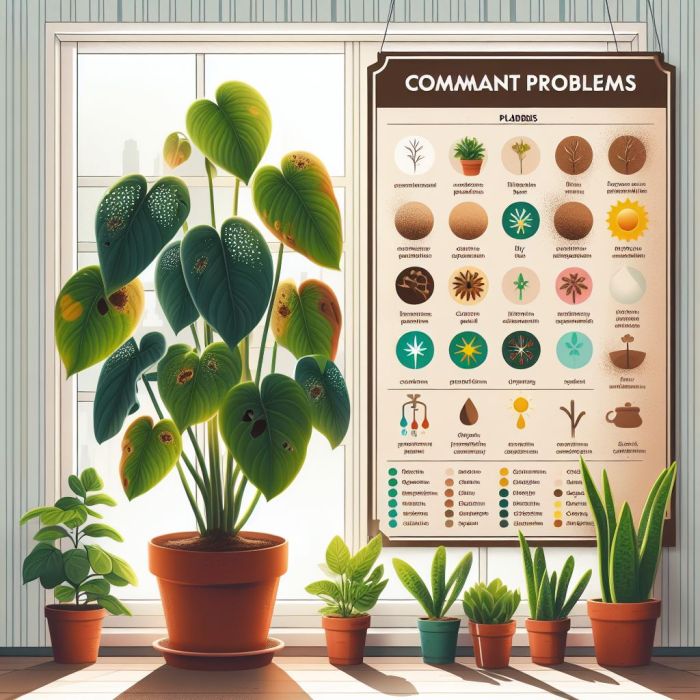
Indoor plants are not just pretty; they also make us feel good and can clean the air. They come in all shapes and sizes, making them a good fit for any home. However, even if you’ve been taking care of plants for a while, you might run into some problems. Things like giving too much or too little water, dealing with pests, or not having enough light can be common houseplant problems.
But don’t worry! We’re here to help you understand these common houseplant problems and show you easy ways to fix them. Whether you’re new to plant care or have been doing it for a while, our tips will help you keep your indoor garden looking great. Let’s learn together how to turn these challenges into successes for your plants!
Contents
- 1 1. Understanding Leaf Drop: A Common Houseplant Problem
- 2 2. Distorted or Abnormal Growth in Houseplants
- 3 3. Yellowing Leaves: Understanding the Causes and Remedies
- 4 4. Discolored Leaf Edges And Tips and Curled Leaves: Identifying Causes and Effective Solutions
- 5 5. Brown and Crispy Leaf Tips: Identifying Common Houseplant Problems
- 6 6. Stretching in Plants: A Sign of Insufficient Sunlight
- 7 7. Sticky Leaves: A Common Houseplant Problem
- 8 8. Leaves with Brown Spots: A Common Houseplant Problem
- 9 9. Mildew or Mold on Leaves: A Common Houseplant Problem
- 10 10. Chewed Up Leaves: A Common Houseplant Dilemma
- 11 11. Misshapen Leaves: A Common Houseplant Issue
- 12 12. The Problem: Mealybugs – A Common Houseplant Challenge
- 13 13. Common Houseplant Problem: Nonabsorbent Soil
- 14 FAQs: Common Houseplant Problems and Solutions
- 14.1 Q1: What are some common issues that houseplants face?
- 14.2 Q2: How can I address leaf drop in my houseplants?
- 14.3 Q3: What causes distorted growth in houseplants, and how can it be treated?
- 14.4 Q4 What can I do about brown and crispy leaf tips on my houseplant?
- 14.5 Q5: How do I know if my houseplant has nonabsorbent soil?
- 14.6 Q6.What causes mold or mildew on houseplant leaves, and how can I prevent it?
- 15 Author
1. Understanding Leaf Drop: A Common Houseplant Problem
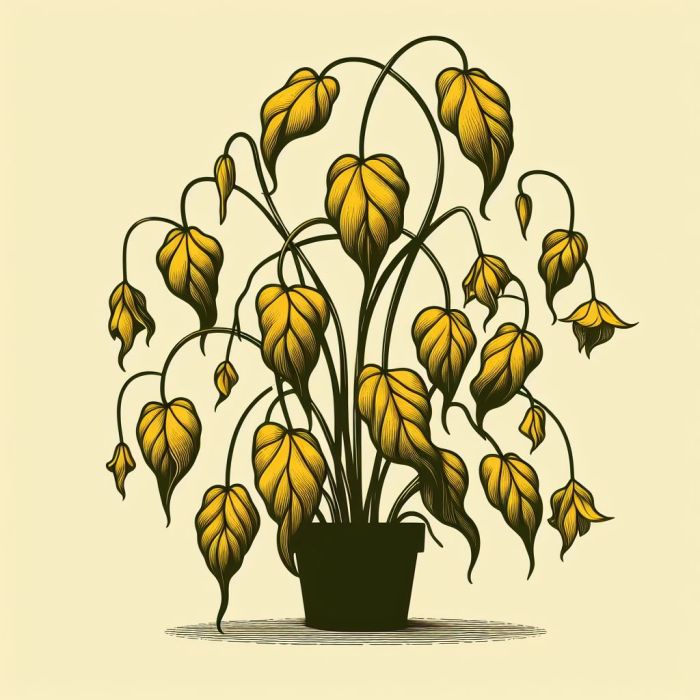
Environmental Shock or Stress:
Some houseplants, particularly varieties like Ficus, may respond negatively to sudden changes in their environment. This reaction often results in the dropping of leaves and can be triggered by alterations in light exposure, exposure to cold drafts, or fluctuations in temperature.
Overwatering Issues:
Frequent overwatering is a prevalent cause of leaf drop among houseplants, especially when the soil remains persistently wet. This condition is often an early sign of root rot. To address this concern, it is crucial to allow the plant’s soil to dry out before the next watering, consider repotting with well-draining soil, and ensure proper drainage in the pot.
Pest-Related Leaf Drop:
Pests can also contribute significantly to leaf drop in houseplants. Thoroughly inspect the entire plant under bright light for signs of insect infestations. Swift intervention, such as the application of insecticidal soap or neem oil, is crucial for preventing further damage and aiding the plant in regaining its health.
Understanding these factors and implementing appropriate measures is essential for successfully addressing the common houseplant problem of leaf drop and ensuring the overall health and vibrancy of indoor greenery.
2. Distorted or Abnormal Growth in Houseplants
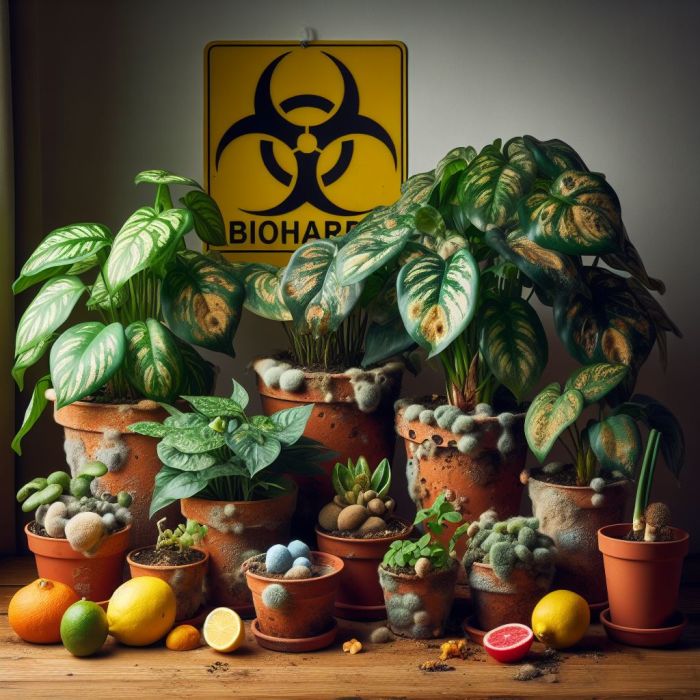
Pest-Induced Distortion:
Pests, such as thrips and aphids, can lead to distorted leaves, particularly on new growth. These tiny pests might go unnoticed until they cause irregular growth patterns. A thorough inspection is essential to identify pests, and sticky traps can aid in their detection. Treatment options include the use of insecticidal soap, neem oil, or, in severe cases, a systemic houseplant insecticide. This is the most often seen common houseplant problem.
Fungal Disease Impact:
Curled leaf edges or new growth failing to unfurl completely may signal a fungal disease. Allowing the foliage to dry out during the day, misting in the morning, and using neem oil as a fungicide can help manage this issue. Alternatively, seeking diagnosis and treatment from a nursery by bringing in a leaf sample is a viable option.
Environmental Factors:
Compacted soil or consistently dry conditions may cause leaves to grow smaller than usual or curl up like a taco. To address this, refresh the soil if it’s old, rehydrate by submerging the plant in a tray of water, aerate the soil using a chopstick or pencil, and adjust the watering frequency.
Light-Related Growth Changes:
Stretching for more light is a common cause of changes in a plant’s growth shape. Plants may become lopsided or grow tall and “leggy” with elongated spaces between leaves. To remedy this, consider rotating the plant regularly for even light exposure, relocating it, or providing supplemental artificial lighting if possible. Explore our selection of elegant plant grows lights for optimal plant care.
3. Yellowing Leaves: Understanding the Causes and Remedies
Watering Concerns:
Another common houseplant problem is yellowing leaves. Yellowing leaves can result from watering issues, indicating either overwatering or insufficient water depending on the leaf’s location. Leaves turning yellow towards the lower or inner part of the plant often signal overwatering (check for wet, heavy, or dark-colored soil). Conversely, yellow new growth may suggest the plant is too dry (check soil moisture). Occasionally, a very dry plant may need to be gently submerged in a saucer of water for gradual rehydration. Allow overwatered plants to mostly dry out before watering again, and if roots have not started to rot, the plant should recover over time.
Sunlight Exposure:
Leaves may yellow or fade to a dull color if exposed to excessive direct sunlight, typically affecting outer foliage or newer growth. Conversely, leaves may turn yellow in low light conditions, primarily affecting lower, older growth towards the inside or bottom of the plant. To address this, adjust the plant’s position further from the window if the light is too intense.
Pest Infestations:
Signs of pests, such as thrips and spider mites, can manifest as yellowing leaves. Carefully inspect the entire plant under strong, bright light for signs of insects. Clean/wipe both the tops and bottoms of leaf surfaces with water, insecticidal soap, or neem oil. Utilize natural or conventional insecticidal remedies available at plant stores and garden centers.
Natural Leaf Aging:
Sometimes, yellowing leaves are a natural part of a leaf’s life cycle, indicating that it has become “old” and is no longer useful to the plant. Nutrients are mostly reallocated to new foliage as old leaves turn yellow and eventually drop off. This typically occurs with lower leaves or towards the inside of the plant, affecting only one leaf at a time.
4. Discolored Leaf Edges And Tips and Curled Leaves: Identifying Causes and Effective Solutions
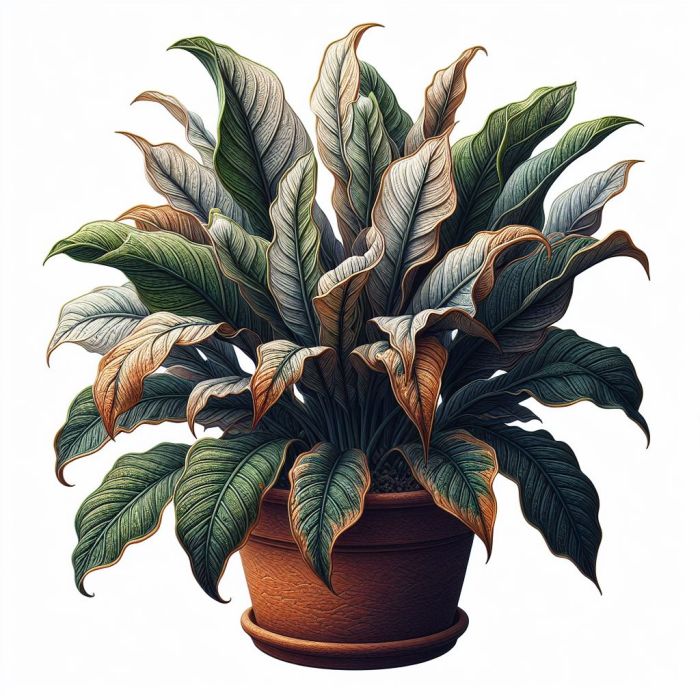
Low Humidity or Salt Accumulation:
Black, brown, or yellow leaf tips may result from low humidity or the buildup of salts and minerals from water or fertilizer. Boost humidity through misting, using a humidifier, placing a pebble tray, or grouping plants. During the dormant growth season (October through February), refrain from fertilizing and let tap water sit for at least 24 hours before using it. Ensure the plant is away from heat sources and cold drafts.
Inconsistent Watering Practices:
Inconsistent watering is a potential cause of leaf issues. Establish a regular watering routine adjusted for seasonal variations to maintain plant health, especially during active or dormant growth periods.
Fungal Diseases:
Tip damage or leaf curling may be indicative of fungal diseases. Allow foliage to dry out during the day, particularly through morning misting. Treat with neem oil as a fungicide or seek professional advice by bringing a leaf sample to a nursery for accurate diagnosis and treatment.
Soil Refresh and Repotting:
Old, tired, or compacted potting soil may contribute to leaf problems. Consider repotting the plant and refreshing the soil every 2 to 3 years, even for mature plants. Explore our garden centers for a selection of quality potting soil for optimal plant care.
5. Brown and Crispy Leaf Tips: Identifying Common Houseplant Problems
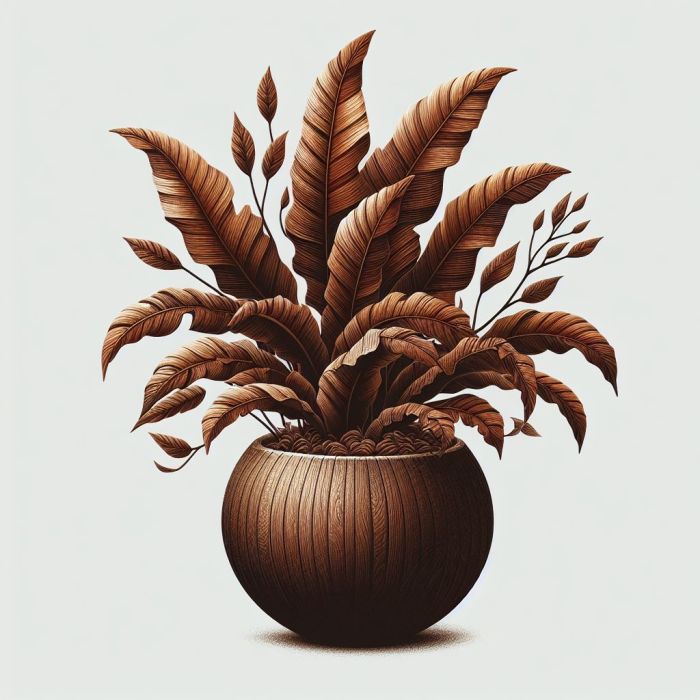
Potassium Deficiency or Underwatering:
If the tips of your common houseplant’s leaves appear brown and crispy, it may indicate a potassium deficiency in the soil. Alternatively, this issue could result from underwatering or inconsistent watering practices. Understanding these factors is essential for effective management of this common houseplant problem.
Humidity and Salt Build-Up:
Brown leaf tips can also be attributed to low humidity levels or salt accumulation in the soil, common houseplant problems that become evident with the presence of white crust on the soil’s surface. Recognizing these signs helps in addressing the specific issues causing the browning of leaf tips.
Thrips Infestation:
Thrips, tiny pests visible to the naked eye resembling tiny white threads, can cause brown and crispy leaf tips, posing another common houseplant problem. Their presence may lead to the curling of leaves. Identifying thrips as a potential cause is crucial for implementing targeted solutions to restore plant health.
Solving the Issue:
1. Potassium Amendment:
Address potassium deficiency by adding an appropriate amendment to the soil. This helps restore the necessary nutrients for the common houseplant’s well-being.
2. Watering Practices Adjustment:
Reassess and adjust your watering habits to ensure consistency and adequacy, addressing a common houseplant problem related to both underwatering and overwatering.
3. Thrips Treatment:
For suspected thrips infestation, use a neem oil spray on the affected leaves. This natural remedy helps control thrips and promotes healthier leaf growth, addressing another common houseplant problem.
4. Humidity Management and Salt Build-Up Alleviation:
Increase humidity around the common houseplant by adding a cool mist humidifier or placing the plant’s pot on a tray filled with pebbles and water. This addresses both low humidity and potential salt build-up, addressing common houseplant problems. Additionally, ensure proper watering practices to flush out excess salts through the drainage holes, maintaining a balanced soil environment.
6. Stretching in Plants: A Sign of Insufficient Sunlight
Identifying Stretching:
Plants that don’t get enough sunlight often show signs of stretching. This is noticeable through the light green color of their leaves, and they may lean towards the light source. This stretching phenomenon is particularly common during seasons with minimal sunlight, such as late fall and winter.
Finding the Right Light:
To address stretching, it’s essential to understand your specific plant’s sunlight needs. If your plant requires 6-8 hours of sunlight, consider placing it by a south-facing window, known for being the brightest. Additionally, regular rotation of your plants ensures that all sides receive an equal amount of sunlight. However, in cases where natural light is insufficient, especially during darker seasons, purchasing a plant light can be a helpful solution.
Optimizing Sunlight for Plant Health:
Creating an environment that provides adequate sunlight is crucial for the overall health of your plants. By strategically placing them in well-lit areas and using supplementary plant lights when needed, you can prevent stretching and promote robust growth. Regular observation of your plants’ response to light conditions allows you to make necessary adjustments, ensuring their well-being throughout changing seasons.
7. Sticky Leaves: A Common Houseplant Problem
Identifying the Issue: Insect Infestation:
If the foliage of your typical indoor plant has a tacky texture, an insect infestation is probably the cause. Aphids often play a role in this, producing a sugary sap byproduct recognized as honeydew, resulting in stickiness. Other potential contributors to the stickiness may include mites or scale insects, which leave an adhesive residue primarily on the lower side of the leaves.
The Solution: Pest Removal and Prevention:
To tackle this prevalent issue with your indoor plants, employ a detachable showerhead to rinse off the pests from your plants. Following that, administer either neem oil or a bar of insecticidal soap on the foliage to eradicate the existing infestation and ward off future occurrences. Another option is to concoct diluted spray using common dishwashing liquid and apply it to leaves as an alternative solution.
Maintaining Plant Health: Post-Treatment Care:
After implementing the solution, observe your common houseplant regularly for signs of recurring stickiness. Adjust your care routine, including watering and monitoring, to prevent the reappearance of pests. This ongoing care ensures the overall health and vitality of your plant, combating the common houseplant problem of sticky leaves effectively.
8. Leaves with Brown Spots: A Common Houseplant Problem
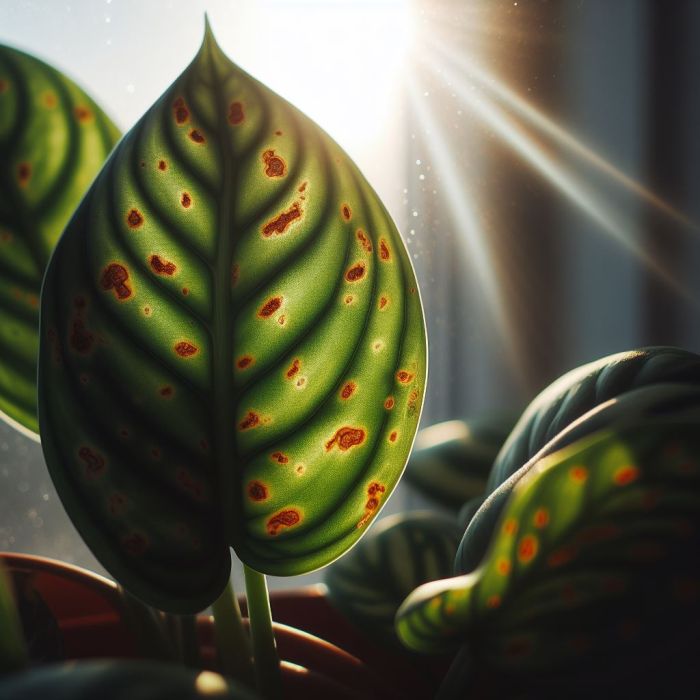
Identifying the Issue: Watering and Plant-Specific Needs:
If you notice brown spots on the leaves of your common houseplant, especially those with watering needs like calathea, it may be a result of incorrect watering. Understanding the specific requirements of your plants is crucial in addressing this common houseplant problem.
Mineral Deficiency: A Potential Cause of Brown Spots:
For houseplants without specific watering needs, leaf patches or brown spots are often linked to mineral deficiency. Determining whether it’s due to the lack of phosphorous, nitrogen, or potassium can be challenging, highlighting the common houseplant problem of nutrient imbalances.
The Solution: Tailored Care and Fertilization:
To address brown spots on your plant’s leaves, inspect for pests or fungal issues, adjust watering to meet the plant’s needs, and prune affected areas. If fungal infections are suspected, apply a suitable fungicide. Maintain a clean environment and monitor for improvements.
Post-Treatment Monitoring and Adjustment:
After implementing the solution, monitor your common houseplant for any recurrence of brown spots. Adjust your care routine, including watering and fertilization, to meet the plant’s specific needs. This ongoing care helps prevent and manage the common houseplant problem of brown spots on leaves effectively.
9. Mildew or Mold on Leaves: A Common Houseplant Problem
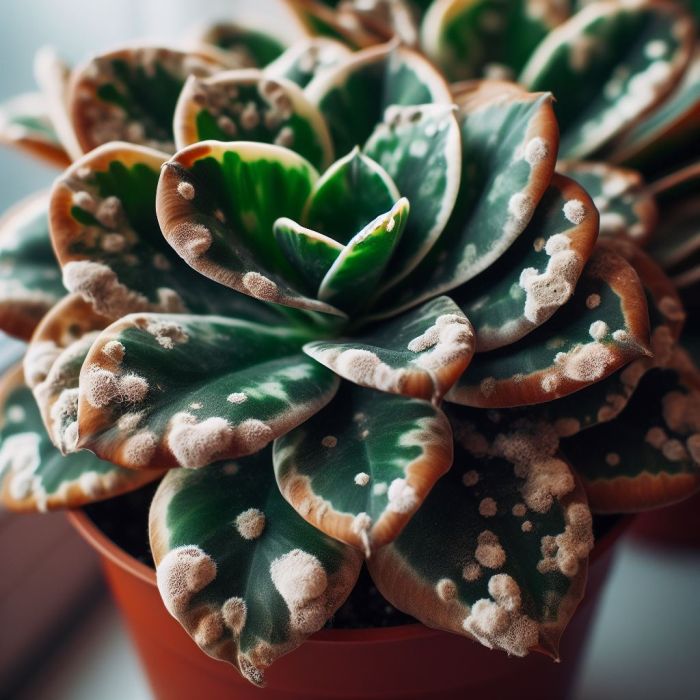
Identifying the Issue: Unsightly Mold or Mildew:
The presence of mildew or mold on your common houseplants is not only unsightly but often bacterial disease. This common houseplant problem can arise from factors such as excessive humidity or moisture, leading to the development of powdery mildew.
Common Causes: Excess Humidity and Powdery Mildew:
In many cases, the common houseplant problem of mold or mildew can be traced back to excessive humidity or moisture, creating an environment conducive to the growth of powdery mildew. Understanding these common causes is crucial for effective management and prevention.
The Solution: Remedies for Mold and Mildew Control:
To address mold or mildew on leaves and soil, repot the plant in good drainage soil. This step is essential, especially when an overabundance of moisture is detected, as it may lead to root rot. For treating powdery mildew on leaves, anti-fungal treatments are effective. You can also create your own anti-fungal spray at home, offering a practical solution to this common houseplant problem.
Post-Treatment Care and Prevention:
After implementing the solution, closely monitor your common houseplant for any recurrence of mold or mildew. Adjust your care routine, focusing on humidity control and moisture levels, to prevent future occurrences of this common houseplant problem.
10. Chewed Up Leaves: A Common Houseplant Dilemma
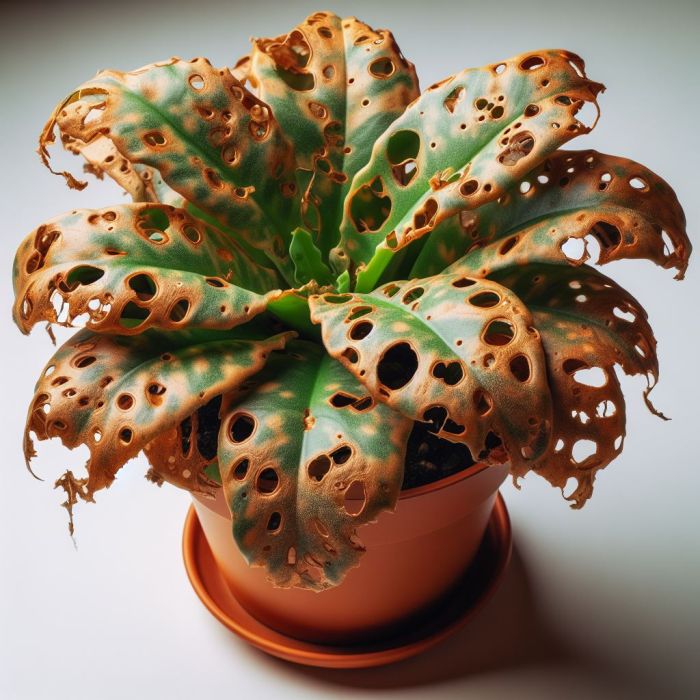
Identifying the Issue: Distressed and Chewed Leaves:
The presence of chewed-up leaves on your common houseplants is a distressing sight and often signals a common houseplant problem. Various factors, including insect infestations or pests, can cause this damage.
Common Causes: Insect Infestations and Pests:
Chewed-up leaves are frequently the result of insect infestations or the presence of pests in your common houseplants. Identifying the specific culprits causing the damage is crucial for effective management and addressing this common houseplant issue.
The Solution: Pest Control and Plant Protection:
To address the issue of chewed-up leaves, implement pest control measures suitable for the identified insects. Consider using insecticidal soap, neem oil, or natural remedies to protect your common houseplants. Additionally, inspect your plants regularly to detect and address pest issues promptly, preventing further damage.
Post-Treatment Care and Vigilance:
After implementing the solution, closely monitor your common houseplant for any signs of recurring leaf damage. Adjust your care routine, including pest prevention measures, to ensure the continued health and vitality of your plants. This ongoing care helps prevent and manage the common houseplant problem of chewed-up leaves effectively.
11. Misshapen Leaves: A Common Houseplant Issue
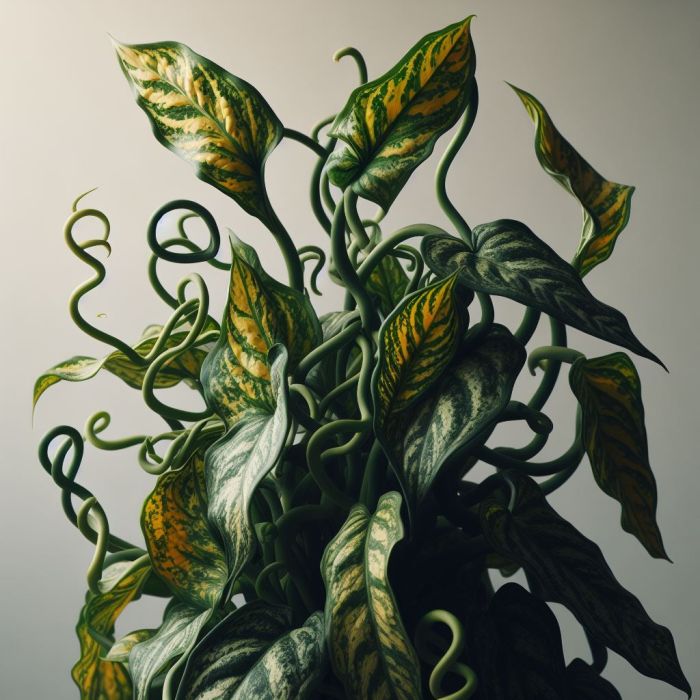
Identifying the Issue: Small or Oddly Shaped Leaves:
The presence of small or oddly shaped leaves on your common houseplants is often a cause for concern and can be attributed to various factors. This common houseplant problem is commonly linked to nutrient deficiency or pest infestations, particularly affecting young leaves. Additionally, small leaves may result from the plant being pot-bound.
Common Causes: Nutrient Deficiency and Pests Impact:
Misshapen leaves can be primarily caused by nutrient deficiency or pest infestations, posing a common houseplant problem, especially in young leaves. Identifying the specific factors impacting leaf development is essential for effective management and plant care.
The Solution: Pest Control and Pot Assessment:
If the new growth on your common houseplant appears stunted or misshapen, insect pests like spider mites, thrips, or aphids may be the culprits. Utilize an insecticidal soap spray to eliminate these pests and prevent further damage. In the absence of pests, assess whether your plant needs a larger pot size, addressing the common houseplant problem associated with being pot-bound.
Post-Treatment Monitoring and Potential Transplant:
After addressing the issue, monitor your common houseplant for any signs of recurring misshapen leaves. Adjust your care routine, including regular pest assessments and considering a larger pot size, to promote healthy leaf development. This ongoing care helps prevent and manage the common houseplant problem of misshapen leaves effectively.
12. The Problem: Mealybugs – A Common Houseplant Challenge
Identifying the Issue: Presence of Mealybugs:
The appearance of mealybugs on your common houseplants is a common challenge that gardeners face. These small, cottony insects are often found on the leaves, stems, and even the soil of plants, posing a threat to the overall health and appearance of your indoor greenery.
Common Signs and Impact: White Residue and Plant Damage:
Mealybugs leave behind a telltale white, cottony residue on the affected areas, signaling their presence. Their feeding habits can cause stunted growth, yellowing of leaves, and even the development of mold. Identifying these common signs is crucial for effective management of the mealybug problem.
The Solution: Mealybug Control and Prevention:
To address the mealybug issue, employ effective control measures such as insecticidal soap, neem oil, or a homemade solution. Thoroughly inspect the affected plant and nearby plants, treating them promptly to prevent the spread of mealybugs. Additionally, introduce preventative measures like regularly cleaning your plants, improving air circulation, and avoiding over-fertilization to discourage future infestations.
Post-Treatment Care and Vigilance:
After implementing the solution, closely monitor your common houseplants for any signs of recurring mealybug infestations. Adjust your care routine, incorporating preventive measures, to maintain a healthy environment for your plants. This ongoing care helps prevent and manage the common houseplant problem of mealybugs effectively.
13. Common Houseplant Problem: Nonabsorbent Soil
Identifying the Issue: Poor Soil Absorption:
Nonabsorbent soil is a common challenge encountered by houseplant enthusiasts. This problem arises when the soil used for potted plants lacks the ability to absorb and retain water effectively. The soil may become compacted, preventing proper drainage and hindering the plant’s ability to access essential moisture.
Common Signs and Impact: Water Runoff and Root Stress:
The signs of nonabsorbent soil include water quickly running off the surface during watering, leaving the soil seemingly dry. In such conditions, the plant’s roots may struggle to access water, leading to stress, dehydration, and nutrient deficiencies. Identifying these signs is essential for addressing the issue promptly.
The Solution: Soil Amendment and Improved Drainage:
To tackle the problem of nonabsorbent soil, consider amending it with organic matter, such as compost or well-rotted manure, to enhance its water-retaining capacity. Additionally, ensure the use of a well-draining potting mix to promote proper drainage. Repotting the plant into fresh, amended soil provides a conducive environment for healthy root development and optimal moisture absorption.
Post-Treatment Care and Monitoring:
After amending the soil, closely monitor the houseplant for improvements in water absorption and overall health. Adjust your watering routine based on the plant’s needs and the improved soil conditions. This ongoing care ensures the mitigation of the common houseplant problem of nonabsorbent soil, promoting a thriving indoor garden.
FAQs: Common Houseplant Problems and Solutions
Q1: What are some common issues that houseplants face?
Houseplants often encounter problems such as leaf drop, distorted growth, yellowing leaves, discoloration, stretching, sticky leaves, brown spots, mold or mildew, chewed-up leaves, misshapen leaves, and nonabsorbent soil.
Q2: How can I address leaf drop in my houseplants?
Leaf drops can be caused by environmental shock, overwatering, or pests. To address this issue, avoid sudden changes in the plant’s environment, allow the soil to dry between waterings, and promptly treat pests with insecticidal soap or neem oil.
Q3: What causes distorted growth in houseplants, and how can it be treated?
Distorted growth may result from pests, fungal diseases, environmental factors, or insufficient light. Treatments include insecticidal soap for pests, neem oil for fungal diseases, soil refreshment for environmental issues, and providing adequate light.
Q4 What can I do about brown and crispy leaf tips on my houseplant?
Address brown and crispy leaf tips by amending potassium deficiency, adjusting watering practices, treating thrips with neem oil, and managing humidity and salt build-up.
Q5: How do I know if my houseplant has nonabsorbent soil?
Signs of nonabsorbent soil include rapid water runoff during watering and dry soil despite watering. Monitor these signs to identify and address the issue promptly.
Q6.What causes mold or mildew on houseplant leaves, and how can I prevent it?
Mold or mildew is often caused by excess humidity or moisture. Repot the plant in well-draining soil, use anti-fungal treatments, and control humidity to prevent future occurrences.

